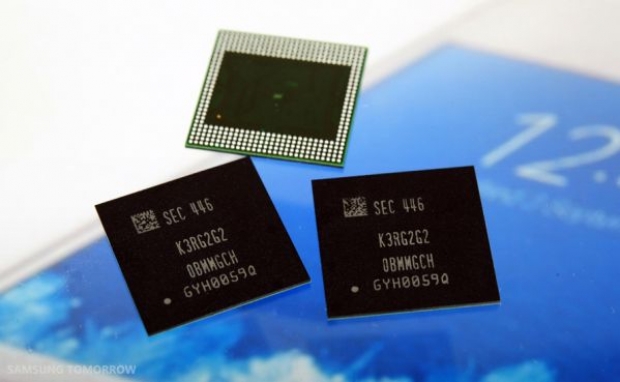Qualcomm has already made a public announcement that its Snapdragon 810 supports LPDDR4 1600MHz dual-channel 64-bit (25.6GBps) which is an indication that Samsung’s LPDDR4 as big as 4GB might find its way to some top phones of 2015. Samsung claims the new 20nm 8Gb LPDDR4 offers twice the performance and density compared to 4Gb LPDDR3 which was based on 20nm-class process technology.
Samsung executive Joo Sun Choi, Executive Vice President of Memory Sales and Marketing, added: “By initiating production of the 20nm 8Gb LPDDR4, which is even faster than the DRAM for PCs and servers and consumes much less energy, we are contributing to the timely launch of UHD, large-screen flagship mobile devices.”
Maybe this is Samsung's way of hinting its Galaxy S6 might come with a higher density screen than 1920x1080 that we saw with Galaxy 5. The 2560x1600 that we saw with LG G3 comes to mind.
With an I/O data rate of up to 3,200 megabits per second (Mbps), the new 8Gb LPDDR4 can support UHD video recording and playback and continuous shooting of high-resolution images with over 20 megapixels. In case of a 2GB package, an 8Gb LPDDR4-based 2GB package can save up to 40 percent of power compared to a 4Gb LPDDR3-based 2GB package, due to low operating voltages and faster processing.
Samsung started shipping its 2GB LPDDR4 and 3GB LPDDR4 DRAM packages this month based on 8Gb and 6Gb LPDDR4 dies and you can expect to see them in phones coming in early 2015.
4GB LPDDR4 will start shipping in early 2015 without an exact date or timeframe at the press time. It will be interesting that only the highest end Intel processors, Haswell-E Extreme edition parts, will use DDR4 as the memory and that phones will get DDR4 before notebooks.




